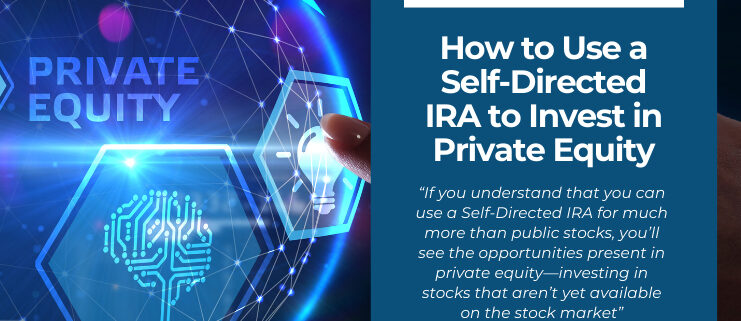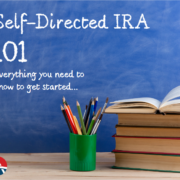How to Use a Self-Directed IRA to Invest in Private Equity
When most people think about holding stocks in a retirement portfolio, it’s a simple idea. Hold public stocks, right? After all, that’s what’s available on the New York Stock Exchange, and that’s what their retirement plan allows. But if you understand that you can use a Self-Directed IRA for much more than public stocks, you’ll see the opportunities present in private equity—investing in stocks that aren’t yet available on the stock market. Yes, it’s possible—and you can do it with using a Self-Directed IRA. Here’s what you’ll need to know.
What is Using Self-Directed IRAs for Private Equity?
The key benefit of using a Self-Directed IRA to invest in private equity is the ability to diversify your retirement portfolio. You aren’t limited to public stocks, bonds, and mutual funds in a Self-Directed IRA. You can turn to non-traditional investments, such as private companies, real estate, precious metals, and more. This gives you the freedom to explore opportunities that could potentially offer greater returns. With that said, this style of investing also requires a more active approach to managing your investments.
The Process of Investing in Private Equity with a Self-Directed IRA
To get started, you’ll need to set up a Self-Directed IRA. Work with a qualified custodian that allows private equity investments. This is crucial. After all, not all custodians handle alternative assets, and the IRS has strict rules about how these accounts must be managed.
Once your Self-Directed IRA is set up, the next step is to identify the private equity opportunity you wish to invest in. Whether you’re interested in a startup or an established private company, you’ll need to conduct thorough due diligence at this point. You’re taking the risk, after all—so ensure the investment aligns with your risk tolerance and unique retirement goals.
Keep in mind that private equity investments often require a lot of commitment of money and a long-term strategy. That’s why it’ll be essential to review the financial health of the company, the potential for growth, and any associated risks of getting invested. You’re in control here—so all the due diligence ultimately is up to you.
Once you’ve chosen a private equity opportunity, the custodian of your Self-Directed IRA will handle the investment transaction on your behalf. They’ll help ensure that you follow all proper IRS regulations, for example. What does that look like? Well, investments must be made in the name of the IRA, not the individual investor. The funds used for the investment will come directly from your IRA, and any profits generated from the investment will flow back into the IRA, preserving the tax-advantaged status of the account.
Key Considerations and Risks
While private equity can offer the potential for high returns, every valid investment has its fair share of risks. The companies you invest in are often less liquid than publicly traded stocks, for example. This means you may not be able to sell your shares quickly. And these companies aren’t subject to the same level of scrutiny and reporting requirements as public companies, which can make it more difficult to assess their financial health.
Many people love private stocks because higher risk sometimes translates to higher rewards. But you’ll have to keep that in mind whenever you place a new investment within your Self-Directed IRA—after all, it’s your retirement money at risk. If you can follow the steps above and work with a well-reputed Self-Directed IRA administration firm, you’ll be in great shape.
Interested in learning more about Self-Directed IRAs? Contact American IRA, LLC at 866-7500-IRA (472) for a free consultation. Download our free guides or visit us online at www.AmericanIRA.com.





